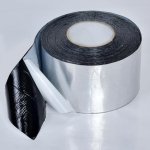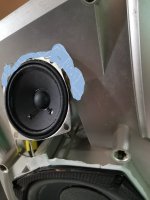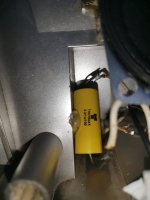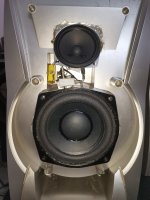Hi,
My bookshelf tweeter was not working fine so i tried replacing it with same specs but instead of 2 inch I replaced it with 2.5 as my cabinet had more room also 2 inch was not available at that time.
What I noticed is my old tweeter had closed back means spider was not visible, were as this tweet has a open back i can see spider.
So will it make any issue like, moreover
woofer is in different compartment there will be not much air pressure only vibration is a issue they might interfere with my tweeter or not i don't know.
If it is bad so I can replace with closed back one or return this 2.5 inch tweeter and try finding closed back tweeter
Thanks in advance
My bookshelf tweeter was not working fine so i tried replacing it with same specs but instead of 2 inch I replaced it with 2.5 as my cabinet had more room also 2 inch was not available at that time.
What I noticed is my old tweeter had closed back means spider was not visible, were as this tweet has a open back i can see spider.
So will it make any issue like, moreover
woofer is in different compartment there will be not much air pressure only vibration is a issue they might interfere with my tweeter or not i don't know.
If it is bad so I can replace with closed back one or return this 2.5 inch tweeter and try finding closed back tweeter
Thanks in advance
Last edited by a moderator:
Also open-back design might still pose interference issues due to vibrations
What do you suggest
Should I keep using this new one or replace it
What do you suggest
Should I keep using this new one or replace it
That doesn't change what I said, but since you mention it the response will be different with the open back driver due to the lower resonance. You could adjust it and then they should sound closer to the same.That twetter has 3.3uf capasitor inline
This 2.5 inch sounds more loud then previous one but main consern is if I play sound at loud volume the woofer will produce heavy vibration will it not effect the sound or it might damage tweeter
The whole speaker will vibrate it's a two way bookshelf speaker outside has a twetter place and woofer screwed in and has a bass out hole
It's a two way bass reflex type bookshelf speaker
It's a two way bass reflex type bookshelf speaker
The difference between a closed-back and an open-back driver lies in their design and how they handle vibrations and sound waves. A closed-back driver is enclosed, preventing sound waves from affecting the backside of the driver. This design typically minimizes interference from vibrations and external factors, maintaining a more consistent sound output.
On the other hand, an open-back driver allows sound waves to pass through both the front and back, potentially leading to interference from vibrations or sound waves bouncing back into the driver, affecting its performance or causing distortion.
So, while adjusting settings or equalization might help compensate for certain differences in response, the inherent design variation between closed-back and open-back drivers can still impact how vibrations and sound waves interact with the driver, potentially affecting the overall audio quality.
On the other hand, an open-back driver allows sound waves to pass through both the front and back, potentially leading to interference from vibrations or sound waves bouncing back into the driver, affecting its performance or causing distortion.
So, while adjusting settings or equalization might help compensate for certain differences in response, the inherent design variation between closed-back and open-back drivers can still impact how vibrations and sound waves interact with the driver, potentially affecting the overall audio quality.
Closed back drivers have the same vibrations bouncing off the inside of the back. Besides, you can absorb what is in the open back enclosure.
In his original thread, the OP said that the whole enclosure is vibrating.
That is hardly surprising as it seems to be constructed mainly, if not entirely, of plastic.
That is hardly surprising as it seems to be constructed mainly, if not entirely, of plastic.
Vibrating in the sense how normally bookshelf speaker have vibration the same way not more or less
I can't fully visualise the construction from those images.
Can we have a picture that shows the entire enclosure instead of your close-up shots?
Can we have a picture that shows the entire enclosure instead of your close-up shots?
In this case the sound from the back of the 'tweeter' can reach the sound from the front of the tweeter. It will cancel itself. That is why the original tweeter was closed on the back - so the back sound does not cancel the front sound.
However these speakers do not seem very 'high-end' so I think the important thing is you are happy with the sound. If the new tweeter is too loud you can try adding a resistor in line, or a resistor network called an L-pad or voltage divider.
However these speakers do not seem very 'high-end' so I think the important thing is you are happy with the sound. If the new tweeter is too loud you can try adding a resistor in line, or a resistor network called an L-pad or voltage divider.
Sound is good but will that cancellation effect audio? I don't see much change just vocals are high but can manage also you can see that is glued to cabinet what I was thinking to take round shaped plastic pieces and screen one side of it to twetter and glue other side to cabinet is that ok ? Or this current glued setup is ok
- Home
- Loudspeakers
- Multi-Way
- Small full range closed back vs open back without enclosure effect on audio




